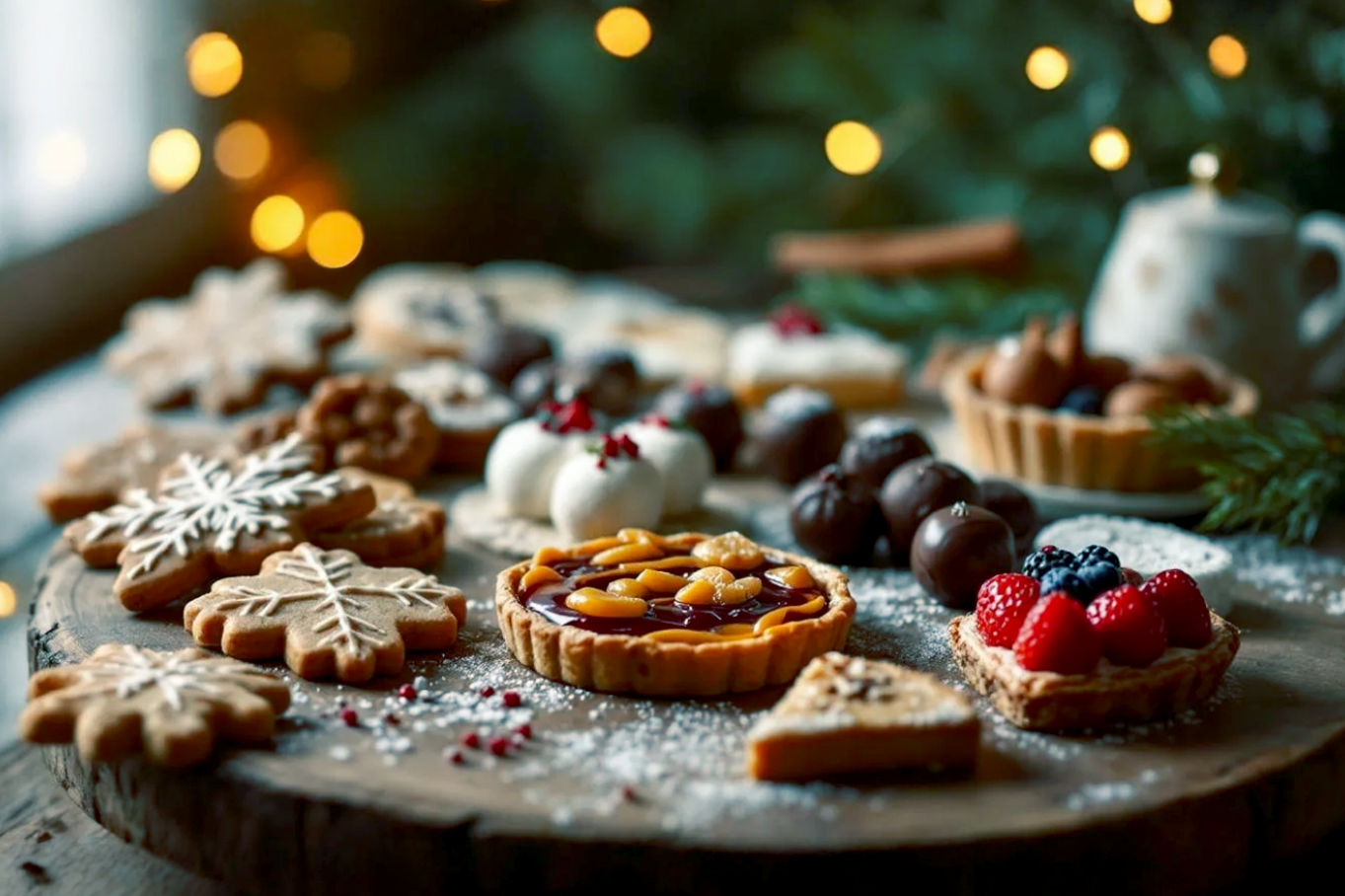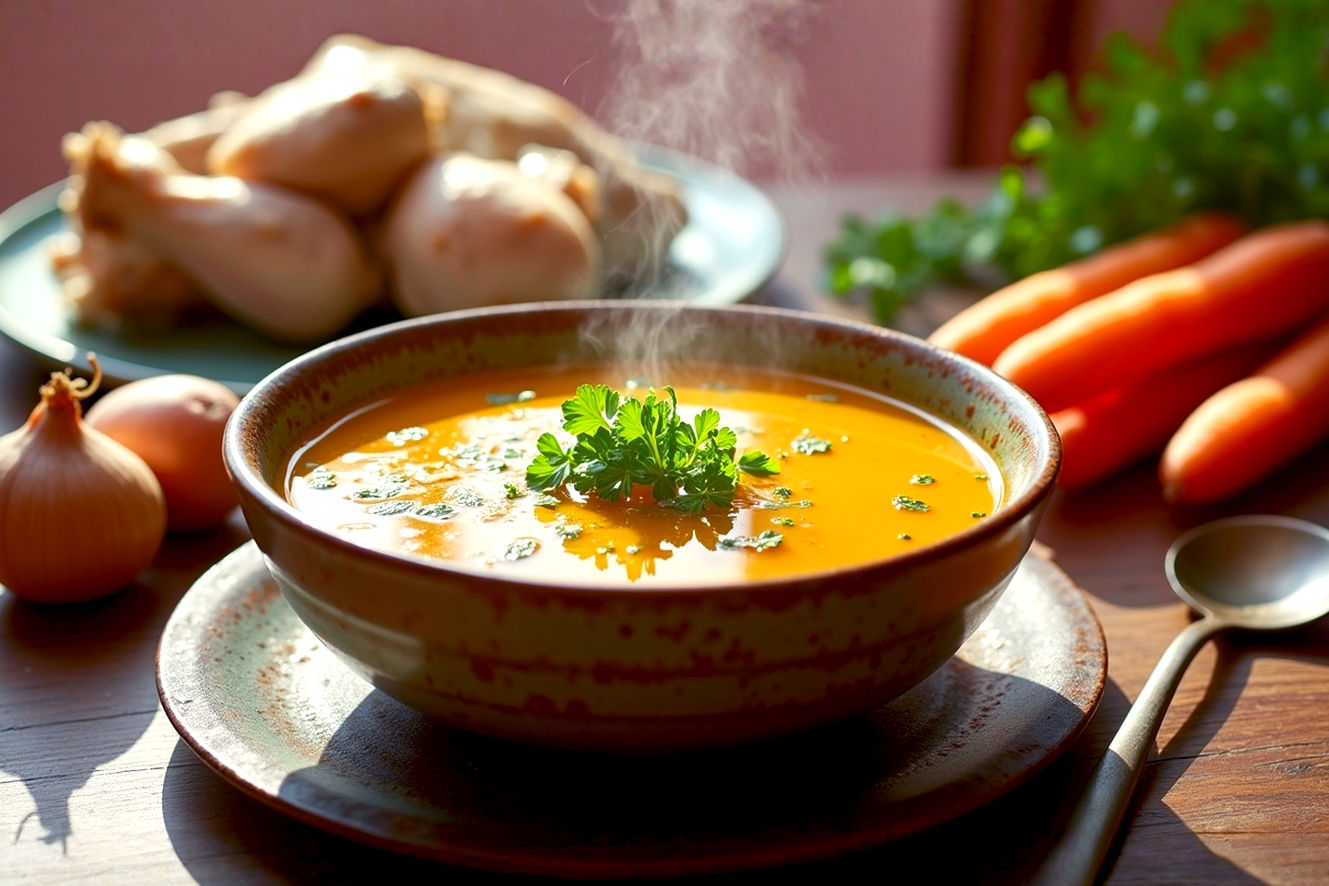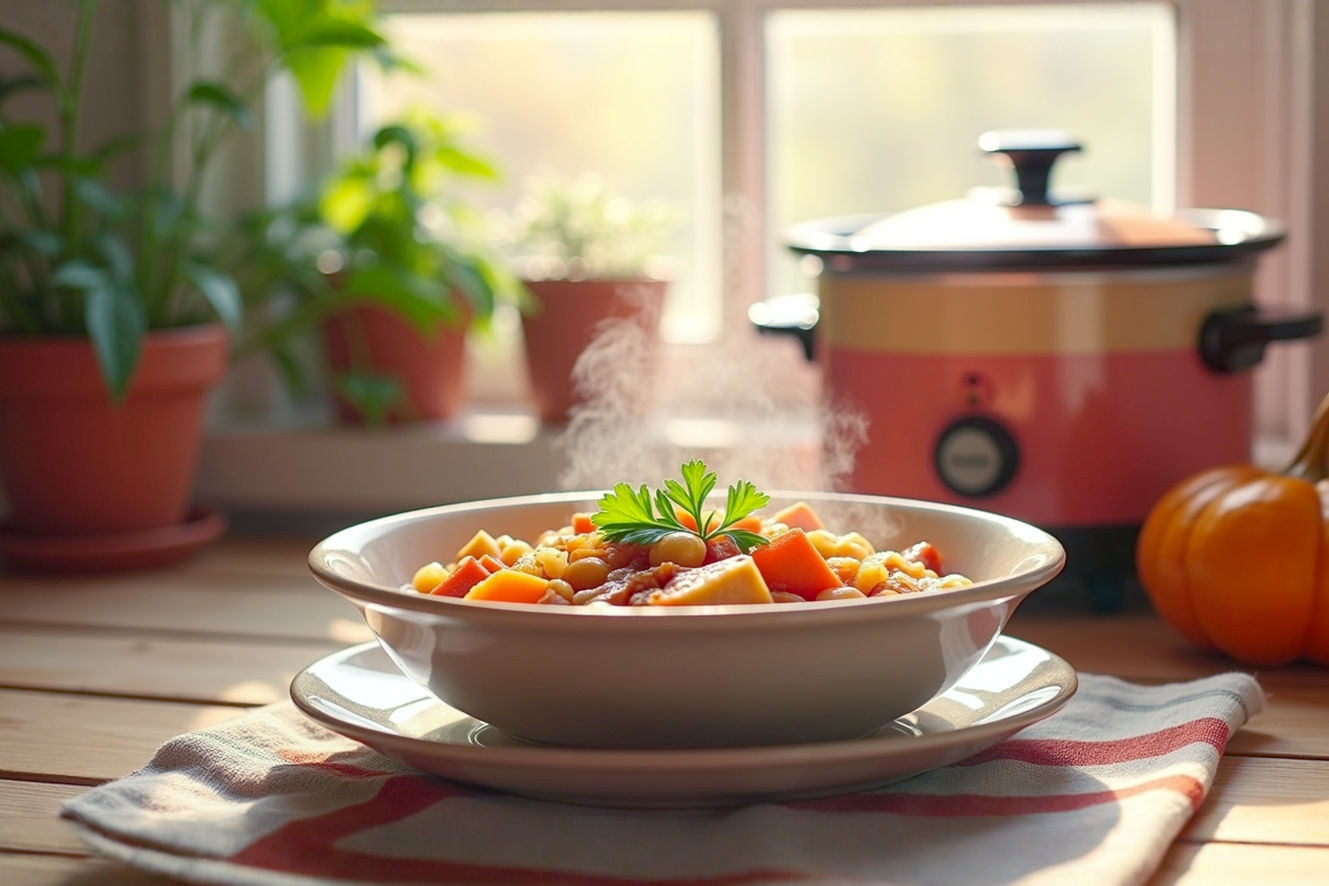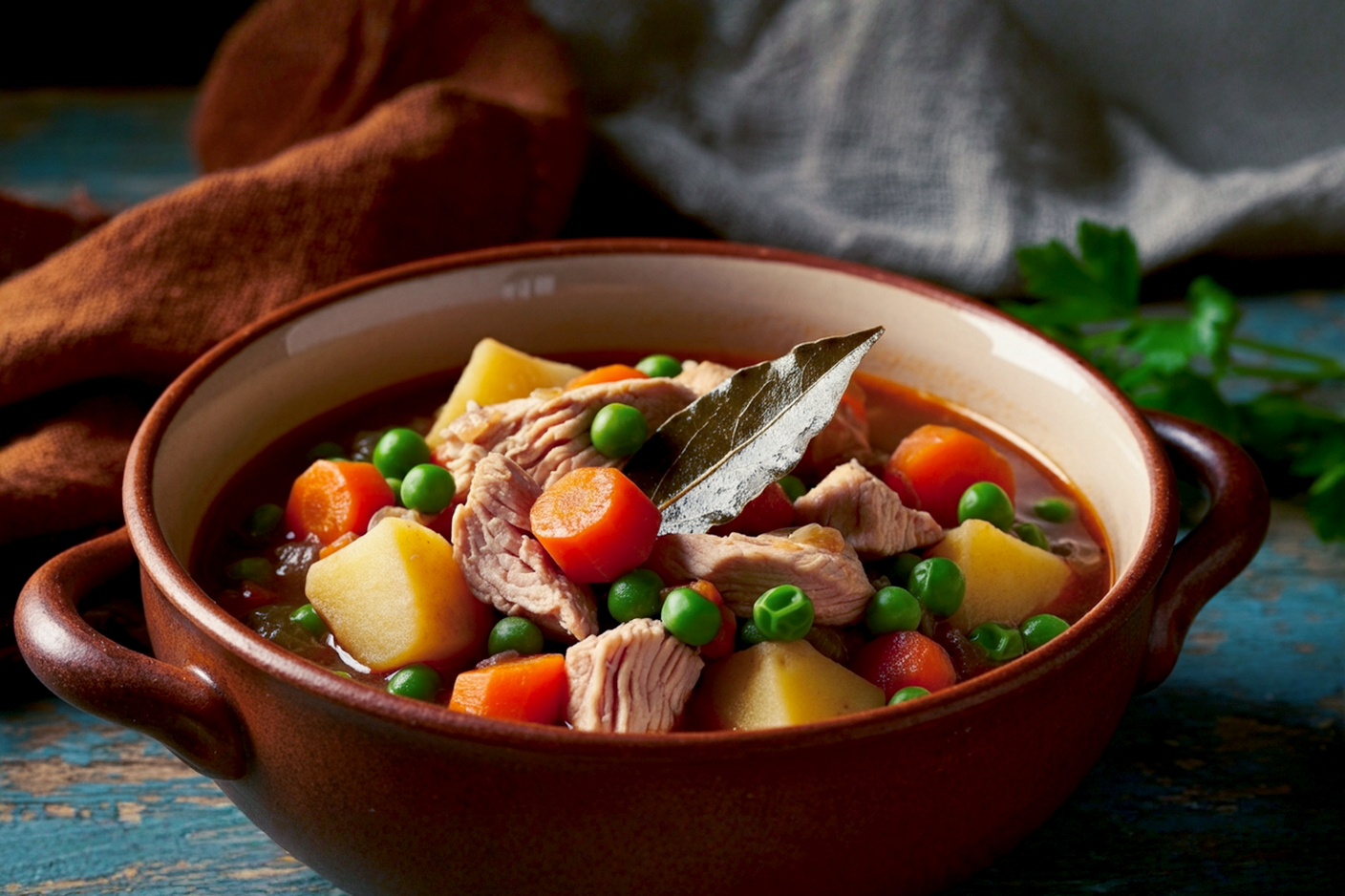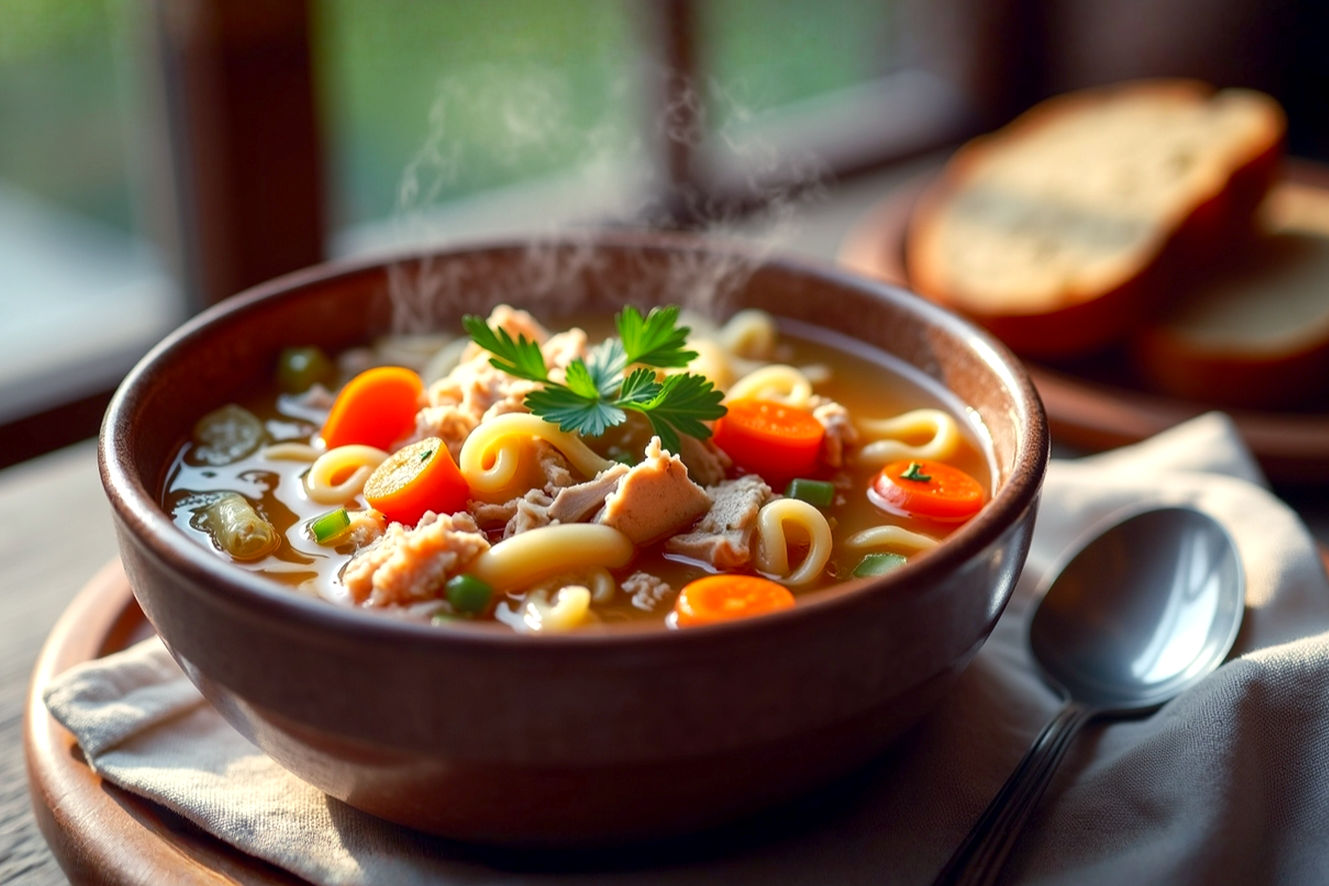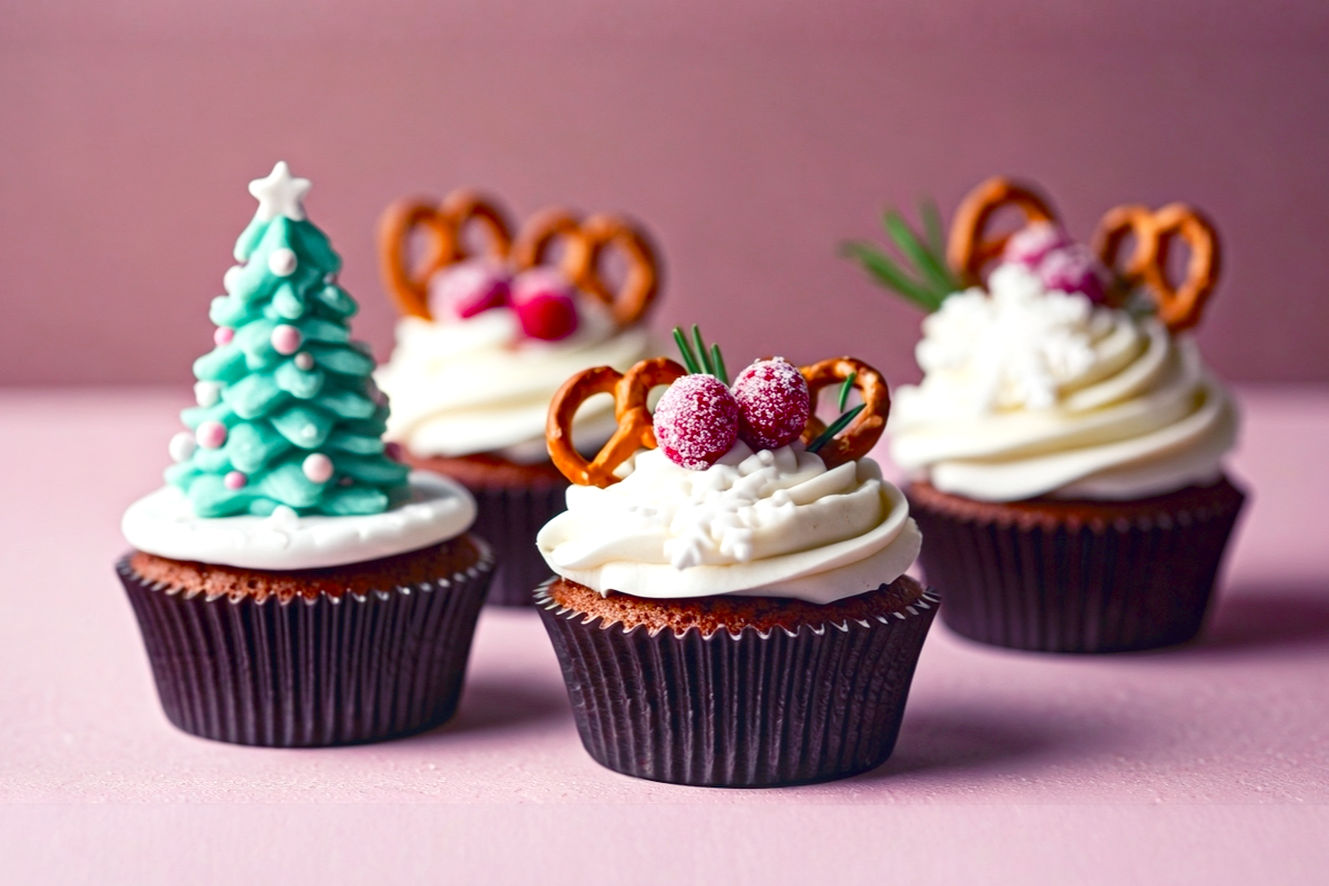This post may contain affiliate links. If you make a purchase through these links, we may earn a commission at no additional cost to you.
The holiday season is a time for joy, togetherness, and, of course, delicious food. While elaborate multi-course meals have their place, sometimes you want something that feels both luxurious and effortless. That’s where the Christmas charcuterie board comes in. It’s more than just a platter of snacks; it’s a beautiful, interactive centerpiece that invites guests to gather, graze, and celebrate.
1. Introduction: The Magic of a Christmas Charcuterie Board
Imagine a stunning spread, bursting with vibrant colors, enticing aromas, and an array of textures. That’s the promise of a well-crafted charcuterie board, especially when infused with the spirit of Christmas. These boards, often called Xmas charcuterie boards or festive charcuterie boards, have become a holiday entertaining staple for good reason.
1.1 Why Charcuterie Boards are Perfect for Holiday Entertaining
Charcuterie boards offer a unique blend of elegance and casual charm, making them ideal for holiday gatherings. First, they are incredibly versatile. You can tailor them to any taste, dietary need, or budget. Second, they encourage interaction. Guests love to pick and choose, discovering new flavor combinations as they mingle. This creates a relaxed, communal atmosphere, which is exactly what you want during the busy holiday season.
Furthermore, a charcuterie board can serve multiple purposes. It can be a sophisticated appetizer before a big meal, a light meal in itself for a casual get-together, or even a delightful dessert spread. This flexibility makes them a go-to option for hosts who want to impress without being chained to the kitchen.
1.2 What Makes a Charcuterie Board “Festive”?
While any charcuterie board is a treat, a festive charcuterie board specifically embraces the holiday spirit. This means incorporating seasonal ingredients, using Christmas-themed colors (reds, greens, whites, golds), and adding decorative elements. Think cranberries, rosemary sprigs, star-shaped cheeses, or even tiny ornaments. The goal is to evoke the warmth, joy, and sparkle of Christmas through your culinary display. It’s about creating a visual feast as much as a delicious one.
1.3 Setting the Stage: Planning Your Holiday Spread
Successful holiday charcuterie board assembly begins with thoughtful planning. Before you even think about ingredients, consider your guest list. How many people are you serving? Are there any dietary restrictions or allergies you need to accommodate? Knowing this will help you determine the size of your board and the variety of items you’ll need.
Next, decide on a theme. Do you want a classic Christmas feel, a winter wonderland, or something more whimsical? A theme helps guide your ingredient choices and decorations, ensuring a cohesive and visually appealing result. Finally, think about your budget. Charcuterie boards can range from simple to extravagant, so set a realistic spending limit and stick to it. With a little planning, you can create a stunning board that fits your needs perfectly.
2. The Core Components: Building Your Festive Foundation
Every great Christmas charcuterie board starts with a solid foundation of high-quality ingredients. While the possibilities are endless, certain categories are essential for a balanced and appealing spread. We’ll explore the key components that form the heart of your Xmas cheese board inspiration.
2.1 Curating the Cheeses: A Trio of Textures and Flavors
Cheese is arguably the most important element of any charcuterie board. Aim for at least three different types of cheese to offer variety in flavor, texture, and appearance. This provides a diverse tasting experience for your guests.
2.1.1 Soft Cheeses: Creamy Delights
Soft cheeses bring a delightful creaminess and spreadability to your board. They often have a mild, buttery flavor that appeals to many palates.
- Brie: A classic choice, Brie is a soft, creamy cow’s milk cheese with a bloomy rind. Its mild, buttery flavor makes it incredibly versatile. For a festive touch, you can bake it with cranberries or fig jam.
- Goat Cheese (Chèvre): This tangy, often crumbly cheese offers a refreshing contrast. You can serve it plain, or roll it in chopped herbs, pistachios, or even crushed cranberries for a holiday twist.
- Camembert: Similar to Brie but often with a slightly stronger, earthier flavor. It’s perfect for spreading on crackers.
2.1.2 Semi-Hard Cheeses: Versatile Favorites
Semi-hard cheeses offer a firmer texture than soft cheeses but are still easy to slice and enjoy. They often have a more pronounced flavor profile.
- Cheddar: A perennial favorite, cheddar ranges from mild to sharp. A good aged cheddar offers a rich, nutty flavor. Consider a white cheddar for a “snowy” look on your Christmas board.
- Gouda: Known for its smooth texture and often sweet, nutty flavor, especially when aged. Smoked Gouda adds a wonderful depth.
- Provolone: A versatile Italian cheese, Provolone can be mild or sharp. It’s great for slicing into cubes or thin pieces.
- Havarti: A Danish semi-hard cheese with a buttery, slightly acidic flavor and a very smooth texture. It often has small holes throughout.
2.1.3 Hard Cheeses: Bold and Pungent
Hard cheeses provide a robust flavor and a firm, often crumbly texture. They are excellent for breaking into shards or grating.
- Parmigiano-Reggiano: The “King of Cheeses,” this Italian hard cheese offers a complex, salty, and nutty flavor. Shards of Parmigiano-Reggiano are a gourmet addition.
- Manchego: A Spanish sheep’s milk cheese with a distinctive herringbone rind. It has a firm, buttery texture and a slightly nutty flavor.
- Aged Gruyère: A Swiss cheese with a dense, firm texture and a rich, nutty, and slightly earthy flavor that becomes more complex with age.
2.1.4 Cheese Pairings: Enhancing the Experience
To elevate the cheese experience, consider complementary pairings. Sweet elements like honey, fig jam, or fruit chutneys beautifully balance the saltiness of cheeses. Crunchy nuts, like walnuts or pecans, add textural contrast. For example, a sharp cheddar pairs wonderfully with apple slices and a drizzle of honey, while a creamy brie is delightful with fig jam and a crisp cracker. The interplay of flavors and textures is key to a truly gourmet Christmas cheese board.
2.2 Selecting the Meats: Savory Stars of the Board
Meats, especially cured varieties, are the heart of “charcuterie” itself. Choose a variety of textures and flavors, from delicate to robust, to complement your cheeses.
2.2.1 Cured Meats: Classic Charcuterie Choices
Cured meats are a staple for their intense flavor and long shelf life.
- Prosciutto: A delicate, salty, thinly sliced Italian ham. Its melt-in-your-mouth texture is a crowd-pleaser.
- Salami: Available in many varieties (Genoa, Sopressata, Calabrese), salami offers a range of spice levels and textures. Look for smaller, artisan-style salamis for a more refined look.
- Capicola (Coppa): A cured pork shoulder or neck, known for its rich flavor and beautiful marbling.
- Chorizo: A Spanish or Portuguese sausage, often spicy and smoky, adding a bold kick.
2.2.2 Cooked Meats: Adding Variety
While cured meats are traditional, adding a cooked meat can provide a different texture and flavor profile.
- Roast Beef (thinly sliced): Offers a tender, savory option.
- Smoked Turkey Breast: A lighter alternative, great for those who prefer poultry.
- Pâté or Rillettes: For a truly gourmet touch, a smooth pâté or rustic rillettes (shredded meat cooked in fat) can be a luxurious addition.
2.2.3 Meat Folding Techniques: Presentation Matters
The way you arrange your meats can significantly impact the visual appeal of your board. Instead of just laying them flat, try these techniques:
- Salami Roses: Fold individual salami slices in half, then in half again, and arrange them tightly in a circle to form a rose shape. This adds height and elegance.
- Prosciutto Ribbons: Gently drape prosciutto slices to create soft, flowing ribbons.
- Fan Fold: For round meats like salami, stack slices and fan them out.
- Loose Piles: For irregular pieces, simply create inviting, slightly messy piles that look abundant.
These simple techniques transform your Christmas charcuterie board from a basic platter into a work of art.
2.3 The Perfect Accompaniments: Beyond Meat and Cheese
While meat and cheese are the stars, the supporting cast of accompaniments truly completes the festive charcuterie board. These elements add freshness, crunch, sweetness, and balance.
2.3.1 Fruits: Freshness and Color
Fruits add natural sweetness, vibrant color, and a refreshing counterpoint to rich meats and cheeses. For a Christmas theme, focus on red, green, and white fruits.
- Red: Cranberries (fresh or sugared), raspberries, strawberries, pomegranate arils, red grapes, sliced apples (tossed in lemon juice to prevent browning).
- Green: Green grapes, kiwi slices, green apple slices, lime wedges.
- White/Other: Pear slices, figs (fresh or dried), orange segments (especially mandarins or clementines for holiday cheer).
2.3.2 Vegetables: Crisp and Vibrant Additions
Vegetables provide crunch, freshness, and often a slight bitterness that cleanses the palate.
- Cherry Tomatoes: Red and round, perfect for a festive look.
- Cucumber Slices: Refreshing and crisp.
- Carrot Sticks or Baby Carrots: A classic crunchy option.
- Bell Pepper Strips: Red and green bell peppers add color and a sweet crunch.
- Radishes: Sliced thin, they offer a peppery bite and a beautiful red hue.
- Olives: A mix of green and black olives adds a briny, savory element.
2.3.3 Crackers and Breads: The Essential Vehicles
These are crucial for delivering the delicious combinations to your mouth. Offer a variety of textures and flavors.
- Water Crackers: Neutral and crisp, allowing the toppings to shine.
- Artisan Crackers: Flavored crackers (rosemary, sea salt, fig) add another layer of taste.
- Breadsticks: Offer a different shape and crunch.
- Toasted Baguette Slices (Croûtes): Perfect for spreading soft cheeses or pâté.
- Mini Pita Breads: Soft and versatile.
- Gluten-Free Options: Always a good idea to include if you know guests have dietary needs.
2.3.4 Spreads and Dips: Flavor Boosters
Spreads and dips add moisture, tang, and additional flavor dimensions.
- Fig Jam or Preserves: A classic pairing with cheese.
- Honey: Drizzle over cheese or serve in a small bowl. A hot honey adds a nice kick.
- Mustards: Dijon, whole grain, or a spicy brown mustard for meats.
- Chutneys: Especially fruit-based chutneys like apple or cranberry.
- Pesto: A vibrant green addition.
- Hummus: A creamy, savory dip that’s also great for vegetarian options.
- Caramelized Onion Jam: Sweet and savory, excellent with strong cheeses.
2.3.5 Nuts and Olives: Salty and Savory Bites
These add texture, healthy fats, and distinct flavors.
- Nuts: Walnuts, pecans, almonds, pistachios, candied pecans or walnuts for a sweet crunch.
- Olives: A mix of Kalamata, green, and black olives. Marinated olives add extra flavor.
- Pickles/Cornichons: Small, tangy pickles provide a sharp contrast to rich meats and cheeses.
2.3.6 Sweet Treats: A Touch of Indulgence
A Christmas charcuterie board can also include a touch of sweetness, especially if it’s serving as a dessert board or a more comprehensive spread.
- Dark Chocolate Squares or Bark: Pairs surprisingly well with some cheeses and fruits.
- Mini Gingerbread Cookies: Festive and flavorful.
- Candy Canes: For a whimsical, edible decoration.
- Dried Fruits: Apricots, dates, cranberries, cherries add concentrated sweetness.
By thoughtfully combining these elements, you create a diverse and appealing spread that caters to all tastes and truly embodies the spirit of festive charcuterie.
3. Festive Themes and Creative Concepts for Your Xmas Charcuterie Board
One of the most exciting aspects of creating a Christmas charcuterie board is the opportunity to embrace a theme. A well-executed theme ties all your elements together, making your board not just a collection of food, but a cohesive and memorable display. Here are some popular and creative Xmas charcuterie board ideas.
3.1 Classic Christmas: Traditional Colors and Flavors
This theme focuses on the iconic colors of Christmas: red, green, and white. It’s timeless, elegant, and instantly recognizable.
- Colors: Emphasize ingredients that are naturally red (cranberries, strawberries, raspberries, red grapes, cherry tomatoes, red bell pepper strips, pepperoni), green (rosemary sprigs, green grapes, kiwi slices, green olives, pesto), and white (various cheeses, white cheddar, goat cheese, mini mozzarella balls).
- Flavors: Stick to traditional holiday flavors. Think aged cheddar, creamy brie, robust salami, and sweet-tart fruits.
- Decorations: Use fresh rosemary sprigs to mimic pine needles, sugared cranberries for a frosty look, and small candy canes or star anise for subtle holiday accents.
3.2 Winter Wonderland: Cool Tones and Icy Accents
Embrace the serene beauty of winter with a board featuring cool, muted tones and sparkling elements.
- Colors: Focus on whites (various cheeses, white chocolate, powdered sugar dusted items), silvers (silver-dusted chocolates, edible glitter), and light blues/greens (blueberries, certain grapes, light green olives).
- Flavors: Lighter cheeses like fresh mozzarella or mild goat cheese, delicate cured meats like prosciutto, and plenty of white fruits (pears, apples). Consider white chocolate-covered pretzels or yogurt-covered raisins.
- Decorations: Dust items with powdered sugar for a snow effect, use silver edible glitter, and arrange ingredients to create a sense of frosty elegance. Small, clean white flowers or silver ornaments can be added around the board.
3.3 Rustic Holiday Charm: Earthy Tones and Natural Elements
This theme celebrates the cozy, natural side of the holidays, perfect for a warm and inviting atmosphere.
- Colors: Rich browns, deep reds, forest greens, and creamy whites.
- Flavors: Hearty cheeses like aged cheddar or smoked Gouda, robust cured meats like sopressata, and earthy accompaniments like walnuts, pecans, dried figs, and dates. Whole grain crackers and artisan breads fit perfectly.
- Decorations: Use a wooden board as your base. Incorporate pinecones, cinnamon sticks, whole star anise, sprigs of fresh thyme or sage, and perhaps some twine or burlap accents. Small bowls of olives or roasted red peppers would also fit this aesthetic.
3.4 Sweet Christmas Dream: Dessert-Focused Boards
Who says charcuterie boards are only for savory items? A Christmas charcuterie board can be a delightful dessert spread, perfect for a sweet ending to your holiday meal.
- Components: A variety of cookies (gingerbread, sugar cookies, shortbread), chocolates (dark, milk, white, truffles), mini cupcakes or brownies, fresh fruits (strawberries, raspberries, grapes, orange segments), sweet dips (chocolate hummus, fruit dips, caramel sauce), marshmallows, and small candies.
- Flavors: Rich chocolate, warm spices (cinnamon, ginger), fruity sweetness, and creamy textures.
- Decorations: Dust with powdered sugar, use festive sprinkles, add mini candy canes, and arrange items in a playful, inviting manner.
3.5 Global Christmas Feast: International Inspirations
Take your guests on a culinary journey by incorporating flavors and ingredients from different Christmas traditions around the world.
- Italian Christmas: Prosciutto, salami, Parmesan, fresh mozzarella, sun-dried tomatoes, olives, focaccia, balsamic glaze.
- French Christmas: Brie, Camembert, pâté, cornichons, Dijon mustard, baguette, grapes.
- Spanish Christmas: Manchego, chorizo, Serrano ham, Marcona almonds, olives, quince paste.
- Nordic Christmas: Smoked salmon, dill cream cheese, rye bread, pickled herring (if adventurous!), lingonberry jam.
- Decorations: Use small flags or themed napkins to highlight the international flair.
3.6 Kid-Friendly Christmas Boards: Fun for the Little Ones
Make the holidays extra special for children with a board designed just for them. Focus on fun shapes, familiar flavors, and easy-to-eat items.
- Components: Star-shaped cheese slices (cut with cookie cutters), mini hot dogs or chicken nuggets, fruit skewers, pretzel sticks, mini sandwiches, colorful crackers, carrot and cucumber sticks with ranch dip, small cookies, and festive candies.
- Presentation: Use cookie cutters to make fun shapes from cheese, bread, and even some meats. Arrange items in a playful, accessible way.
- Decorations: Add small toy figures (like reindeer or Santa), colorful sprinkles, and edible glitter. Make it interactive and exciting.
3.7 Vegetarian/Vegan Festive Boards: Plant-Based Delights
Ensure all your guests feel included by creating a beautiful plant-based board. This can be a standalone board or an addition to a larger spread.
- Components:
- Vegetarian: A wide array of cheeses (as above), hard-boiled eggs, various fruits and vegetables, nuts, olives, dips like hummus, baba ghanoush, or spinach dip.
- Vegan: Vegan cheeses (almond, cashew, or soy-based), plant-based pâté, roasted vegetables (bell peppers, zucchini), marinated artichoke hearts, sun-dried tomatoes, a wide variety of fruits, nuts, seeds, olives, and vegan crackers/breads.
- Decorations: Focus on the natural beauty of the produce, using fresh herbs and vibrant colors.
By choosing a theme, you give your festive charcuterie board a cohesive identity, making it even more memorable for your holiday celebration.
4. Assembling Your Masterpiece: Step-by-Step Guide
Once you’ve gathered all your delicious components, the real fun begins: Christmas charcuterie board assembly. This isn’t just about placing food on a board; it’s about creating a visually stunning and inviting display. Think of yourself as an artist, arranging colors, textures, and shapes.
4.1 Choosing Your Board: Size, Shape, and Material
The board itself is the canvas for your edible art. Its size and material will influence the overall look and feel.
- Size: Consider the number of guests. A small board (12-16 inches) is good for 2-4 people, a medium (18-24 inches) for 5-8, and a large board (24+ inches or multiple boards) for larger gatherings.
- Shape: Rectangular, round, or even irregular shapes work well. Rectangular boards offer more linear space, while round boards encourage a radial arrangement.
- Material:
- Wood: Classic and rustic, wood boards (acacia, bamboo, olive wood) are popular for their natural beauty. Ensure they are food-safe and properly sealed.
- Slate: Provides a sleek, modern look and is great for labeling cheeses with chalk.
- Marble: Elegant and keeps cheeses cool, but can be heavy.
- Ceramic/Porcelain Platters: Offer various designs and are easy to clean.
4.2 Essential Tools and Utensils
Having the right tools makes assembly and serving much easier.
- Small Bowls or Ramekins: Essential for holding dips, olives, nuts, and smaller fruits, preventing them from mixing with other items and keeping the board tidy.
- Cheese Knives: A variety of knives for different cheese types (e.g., a spreader for soft cheeses, a pointed knife for hard cheeses).
- Small Tongs or Spoons: For serving individual items hygienically.
- Toothpicks or Skewers: Useful for picking up small items or creating mini fruit/meat skewers.
- Parchment Paper: If your board isn’t food-safe or you want easier cleanup, line it with parchment paper.
4.3 The Art of Arrangement: Tips for a Visually Stunning Display
Arranging a gourmet Christmas charcuterie board is all about creating visual appeal and making it easy for guests to access everything.
4.3.1 Anchoring Your Board: Placing Large Items First
Start by placing your largest, most important items first. These are typically your cheeses and any larger bowls of dips or spreads. Distribute them evenly across the board to create visual anchors and provide structure. Don’t place them too close together; leave space for other items.
4.3.2 Creating Flow and Movement
Once the anchors are in place, start adding the meats and crackers. Arrange them in a way that creates a sense of flow. For instance, fan out crackers around a cheese, or drape prosciutto in a wavy pattern. Avoid rigid, straight lines; curves and organic shapes are more inviting. Think about how guests will move around the board and reach for items.
4.3.3 Filling in the Gaps: The Power of Small Details
This is where the magic happens. Once the main components are down, fill in all the empty spaces with fruits, nuts, olives, and small candies. This makes the board look abundant and lush. Don’t be afraid to overlap items slightly; it adds to the overflowing, generous feel. These smaller items also provide pops of color and texture.
4.3.4 Adding Height and Dimension
A flat board can look dull. Add height and dimension by:
- Folding Meats: As mentioned earlier, salami roses or draped prosciutto add vertical interest.
- Stacking Crackers: Create small stacks of crackers or breadsticks.
- Using Bowls: Elevate some small bowls by placing them on a small inverted bowl or block underneath.
- Larger Fruits: Arrange whole pomegranates or artfully cut apples to provide natural height.
4.3.5 Color Coordination and Contrast
Think about your color palette. For a Christmas charcuterie board, you’ll likely focus on reds, greens, and whites. Arrange items so that contrasting colors are next to each other (e.g., red cranberries next to white cheese) to make them pop. This visual contrast makes the board more dynamic and appealing.
4.4 Garnishes and Decorations: The Festive Finishing Touches
Garnishes are the final flourish that truly transforms your board into a festive charcuterie board. They add aroma, color, and that undeniable holiday sparkle.
4.4.1 Edible Garnishes: Herbs and Berries
- Fresh Rosemary Sprigs: These look like miniature pine branches and smell wonderfully festive. Tuck them into gaps or around cheeses.
- Sugared Cranberries: A stunning edible decoration. Simply roll fresh cranberries in simple syrup, then in granulated sugar, and let them dry. They look like frosted jewels.
- Fresh Mint Leaves: Add a pop of bright green and a refreshing scent.
- Pomegranate Arils: Sprinkle these jewel-like seeds over cheeses or dips for color and a burst of flavor.
4.4.2 Non-Edible Decorations: Lights and Ornaments
For an extra festive touch, you can add non-edible decorations around the board, but not directly on the food.
- Fairy Lights: Weave battery-operated fairy lights around the base of the board for a magical glow.
- Small Ornaments: Place tiny, clean Christmas ornaments or pinecones around the edges of the board.
- Cinnamon Sticks or Star Anise: These add a beautiful aroma and rustic charm.
Remember to keep non-edible decorations clearly separate from the food to avoid any confusion. With these tips, your DIY Christmas charcuterie board will be a true showstopper.
5. Beyond the Board: Drinks and Serving Suggestions
A Christmas charcuterie board is a feast for the senses, but the experience isn’t complete without the perfect beverages and thoughtful serving etiquette. Pairing your board with the right drinks enhances the flavors and elevates the entire holiday gathering.
5.1 Wine Pairings for Your Christmas Charcuterie
Wine and charcuterie are a classic combination. The key is to offer a variety that complements the diverse flavors on your board.
- Red Wines:
- Pinot Noir: Its light body, red fruit notes, and earthy undertones make it versatile for a range of cheeses and lighter cured meats like prosciutto.
- Merlot: A medium-bodied red with soft tannins, often featuring plum and chocolate notes, pairs well with semi-hard cheeses like Gouda and milder salamis.
- Cabernet Sauvignon: A bolder red, best with aged, harder cheeses like aged cheddar or Parmigiano-Reggiano, and richer meats.
- White Wines:
- Sauvignon Blanc: Crisp, acidic, and often with citrus or herbaceous notes, it cuts through the richness of creamy cheeses and complements fresh fruits and vegetables.
- Chardonnay (unoaked): A clean, crisp Chardonnay works well with a variety of cheeses without overpowering them.
- Rosé: A versatile choice, especially dry rosés, offering fruitiness that pairs well with both meats and cheeses.
- Sparkling Wine/Champagne: The bubbles and acidity make sparkling wine an excellent palate cleanser, pairing beautifully with almost everything on a charcuterie board, especially salty meats and creamy cheeses. It adds a celebratory touch to your festive charcuterie board.
5.2 Festive Cocktails and Mocktails
For those who prefer spirits or non-alcoholic options, festive drinks add to the holiday cheer.
- Cocktails:
- Cranberry Moscow Mule: A holiday twist on a classic, with vodka, ginger beer, lime juice, and cranberry juice.
- Spiced Pear Martini: A sophisticated drink with pear vodka, spiced pear liqueur, and a hint of cinnamon.
- Old Fashioned: A timeless choice, especially if your board features smoky meats and aged cheeses.
- Mocktails:
- Sparkling Cranberry-Rosemary Punch: A mix of cranberry juice, sparkling water, lime, and fresh rosemary.
- Gingerbread Latte (iced or hot): A sweet, comforting non-alcoholic option.
- Spiced Apple Cider: Warm and inviting, perfect for a chilly evening.
5.3 Non-Alcoholic Beverages
Don’t forget simple, refreshing non-alcoholic choices.
- Sparkling Water with Fruit: Add slices of orange, lime, or cranberries for a festive touch.
- Juices: Cranberry, apple, or pomegranate juice.
- Hot Chocolate Bar: For a cozy touch, set up a self-serve hot chocolate station with marshmallows, whipped cream, and sprinkles.
5.4 Serving Etiquette and Best Practices
To ensure your Christmas charcuterie board is enjoyed to its fullest, consider these serving tips:
- Temperature: Remove cheeses from the refrigerator about 30-60 minutes before serving. This allows them to come to room temperature, enhancing their flavor and texture. Meats can also benefit from being slightly less chilled.
- Utensils: Provide a separate cheese knife for each type of cheese and small tongs or spoons for other items. This prevents flavor transfer and maintains hygiene.
- Labels: For larger or more diverse boards, consider small labels for each cheese and meat. This helps guests identify what they’re eating and can be a fun talking point.
- Replenishment: If you have a large gathering, prepare extra quantities of popular items in advance. You can easily replenish the board as needed without having to start from scratch.
- Placement: Place the board in a central, accessible location where guests can gather around it comfortably. Ensure there’s enough space for plates and drinks nearby.
By paying attention to these details, you ensure that your festive charcuterie board is not only a visual delight but also a seamless and enjoyable culinary experience for everyone.
6. Planning and Preparation: Making Your Holiday Easy
Creating a stunning Christmas charcuterie board doesn’t have to be stressful. With a little planning and smart preparation, you can assemble a beautiful spread without feeling overwhelmed, leaving you more time to enjoy the holiday festivities.
6.1 Shopping List Essentials: Don’t Forget a Thing
A well-organized shopping list is your best friend. Break it down by category to ensure you don’t miss anything.
- Cheeses: (e.g., Brie, Sharp Cheddar, Aged Gruyère) – specify types and quantities.
- Meats: (e.g., Prosciutto, Genoa Salami, Capicola) – specify types and quantities.
- Fruits: (e.g., Red Grapes, Cranberries, Pomegranate, Apples, Pears) – consider fresh and dried.
- Vegetables: (e.g., Cherry Tomatoes, Cucumber, Bell Peppers, Olives, Cornichons) – specify types.
- Crackers/Breads: (e.g., Water Crackers, Artisan Crackers, Baguette) – include gluten-free if needed.
- Spreads/Dips: (e.g., Fig Jam, Honey, Dijon Mustard, Hummus) – specify types.
- Nuts: (e.g., Walnuts, Pecans, Almonds) – specify types.
- Sweet Treats (Optional): (e.g., Dark Chocolate, Mini Cookies, Candy Canes) – specify types.
- Garnishes: (e.g., Fresh Rosemary, Sugared Cranberries) – specify types.
- Beverages: (e.g., Wine, Sparkling Water, Juices) – specify types.
- Non-Food Items: (e.g., Small Bowls, Cheese Knives, Parchment Paper, Labels, Fairy Lights) – check what you already have.
When making your Christmas charcuterie board shopping list, always consider the number of guests and their preferences.
6.2 Pre-Assembly Tips: Saving Time and Stress
Many components of your DIY Christmas charcuterie board can be prepared in advance, saving you precious time on the day of your gathering.
- Wash and Cut Fruits/Vegetables: Wash and slice all fruits and vegetables. Store them in airtight containers in the refrigerator. For apples and pears, toss them lightly in lemon juice to prevent browning.
- Prepare Dips/Spreads: Make or portion out any homemade dips or spreads. Store them in small, covered bowls in the fridge.
- Arrange Meats (Partially): You can pre-fold some of your meats (like salami roses) and store them on a plate, covered, in the refrigerator.
- Portion Nuts and Olives: Place nuts and olives into the small serving bowls you plan to use. Cover them until ready to place on the board.
- Prepare Garnishes: Make sugared cranberries or wash rosemary sprigs.
- Slice Breads: Slice baguettes and store them in an airtight bag or container to keep them fresh. You can toast them just before serving.
By doing these tasks a day or even two in advance, you significantly reduce the last-minute rush, making Christmas charcuterie board assembly much more enjoyable.
6.3 Storage and Freshness: Keeping Your Board Perfect
Maintaining the freshness of your ingredients is crucial for a delicious and safe charcuterie board.
- Before Assembly: Keep all perishable items (cheeses, meats, fresh fruits, and vegetables) refrigerated until about 30-60 minutes before you plan to serve.
- Assembled Board: If you need to assemble the board a few hours in advance, cover it loosely with plastic wrap and refrigerate. However, it’s best to add crackers and delicate items (like fresh herbs) just before serving to prevent them from getting soggy or wilting.
- Leftovers: After the party, promptly remove all perishable items from the board. Store cheeses and meats in separate airtight containers in the refrigerator. Discard any items that have been sitting out for more than two hours at room temperature. Crackers and bread should be stored in airtight containers at room temperature.
6.4 How Much to Prepare: Quantity Guidelines
Estimating quantities can be tricky, but here are some general guidelines for your festive charcuterie board:
- As an Appetizer (2-3 hours, before a meal):
- Cheeses: 1-2 ounces per person (total).
- Meats: 1-2 ounces per person (total).
- Crackers/Bread: 4-6 pieces per person.
- Fruits/Veggies/Nuts/Dips: Roughly 1/2 cup total per person.
- As a Main Course (for a casual gathering):
- Cheeses: 2-3 ounces per person.
- Meats: 2-3 ounces per person.
- Crackers/Bread: 6-8 pieces per person.
- Fruits/Veggies/Nuts/Dips: Roughly 1 cup total per person.
It’s always better to have a little too much than not enough, especially during the holidays. You can always repurpose leftovers! These Christmas charcuterie board ideas are designed to be flexible, so adjust quantities based on your specific guest list and their appetites.
7. Troubleshooting and Tips for Success
Even with careful planning, questions and minor challenges can arise when creating your Christmas charcuterie board. Here are some common issues and helpful tips to ensure your festive spread is a resounding success.
7.1 Common Charcuterie Board Mistakes to Avoid
Knowing what pitfalls to sidestep can save you time and ensure a better outcome.
- Overcrowding the Board: While abundance is good, too much can make it look messy and hard to access. Leave a little breathing room between main components. You can always refill as needed.
- Serving Cold Cheese: Cheese flavors are muted when cold. Always allow cheeses to come to room temperature (30-60 minutes) before serving for optimal taste and texture. This is a common oversight that significantly impacts the gourmet Christmas charcuterie experience.
- Lack of Variety: Sticking to just one type of cheese or meat can make the board less interesting. Aim for a mix of flavors, textures, and colors.
- Ignoring Dietary Needs: Failing to consider allergies or dietary restrictions (vegetarian, vegan, gluten-free) can make guests feel excluded. Offer alternatives or clearly label items.
- Not Providing Utensils: Guests need appropriate knives, tongs, or spoons to serve themselves cleanly and easily. Don’t make them use their fingers for everything!
- Forgetting a Trash Bowl: A small bowl for olive pits, cheese rinds, or used toothpicks is a thoughtful addition that keeps the main board tidy.
7.2 Adapting for Dietary Restrictions
Making your festive charcuterie board inclusive is a sign of a thoughtful host.
- Gluten-Free: Offer a dedicated section with gluten-free crackers and bread. Ensure there’s no cross-contamination with regular bread crumbs.
- Vegetarian/Vegan: As discussed in the themes section, you can create an entirely plant-based board or clearly label vegetarian/vegan options on a mixed board. Include plenty of fruits, vegetables, nuts, olives, hummus, and vegan cheeses/dips.
- Nut Allergies: If a guest has a severe nut allergy, it’s best to avoid nuts on the board entirely or create a separate, nut-free mini-board. Otherwise, clearly label items containing nuts.
- Dairy-Free: Offer dairy-free cheese alternatives and ensure dips are also dairy-free.
7.3 Budget-Friendly Charcuterie Board Ideas
You don’t need to break the bank to create an impressive Christmas charcuterie board.
- Focus on Value Cheeses: Instead of expensive imported varieties, opt for more affordable yet delicious cheeses like sharp cheddar, Colby Jack, or Monterey Jack. Look for sales at your local grocery store.
- Smart Meat Choices: Instead of multiple types of high-end cured meats, choose one or two good quality salamis and supplement with more budget-friendly options like thinly sliced turkey or ham from the deli counter.
- Seasonal Produce: Buy fruits and vegetables that are in season, as they are often more affordable and flavorful. Cranberries, apples, and oranges are great festive choices that are usually budget-friendly.
- DIY Dips and Spreads: Making your own hummus or a simple fruit jam can be cheaper than buying gourmet versions.
- Bulk Buying: If you’re hosting a large party, buying some items in bulk (like crackers or nuts) can save money.
- Homemade Accents: Instead of store-bought candied nuts, make your own. They’re easy and delicious!
7.4 Making it Interactive: Labeling and Serving Utensils
Enhance the guest experience by making your board easy to navigate and understand.
- Labels: Small flags or chalk markers on slate boards are excellent for identifying cheeses, meats, and special spreads. This is especially helpful for unique or artisan items, allowing guests to discover new favorites.
- Serving Utensils: Provide a dedicated utensil for each distinct item. This prevents guests from using their fingers and keeps the board hygienic. Small tongs are great for meats, a spreader for soft cheeses, and a pick for olives or pickles.
- Flow: Arrange items in a logical flow, perhaps grouping complementary items together (e.g., a cheese with its ideal cracker and a dollop of jam nearby).
By implementing these tips, your Xmas charcuterie board ideas will not only look fantastic but also be incredibly practical and enjoyable for everyone.
8. Conclusion: Your Unforgettable Festive Spread
Creating a Christmas charcuterie board is more than just assembling food; it’s about crafting an experience. It’s an opportunity to express your creativity, share delicious flavors, and foster connection during the most wonderful time of the year. From selecting the perfect cheeses and meats to artfully arranging vibrant fruits and festive garnishes, every step contributes to a memorable holiday moment.
8.1 Recap of Key Takeaways
We’ve covered a lot of ground, but the core principles for a successful festive charcuterie board remain simple:
- Variety is Key: Offer a diverse selection of cheeses, meats, fruits, and accompaniments to cater to different tastes and provide textural contrast.
- Theme It Up: A holiday theme (Classic Christmas, Winter Wonderland, Rustic Charm) guides your choices and makes the board visually cohesive and exciting.
- Presentation Matters: Pay attention to arrangement, color, height, and filling gaps to create an abundant and appealing display.
- Plan Ahead: Pre-assembly and a detailed shopping list reduce stress and ensure freshness.
- Don’t Forget the Drinks: Pair your board with complementary wines, cocktails, or mocktails to complete the culinary experience.
- Be Inclusive: Consider dietary restrictions and offer alternatives to ensure all guests feel welcome.
8.2 Encouragement for Creative Exploration
While our guide provides a comprehensive framework, remember that the best Xmas charcuterie board ideas often come from personal touches and creative experimentation. Don’t be afraid to try new cheeses, incorporate unique seasonal produce, or even add unexpected elements that reflect your own holiday traditions. Perhaps a homemade spiced nut mix, a special family jam, or even a small, edible centerpiece. Let your imagination lead the way!
8.3 A Final Toast to Festive Feasting
Whether you’re hosting a grand holiday party or a cozy family gathering, your Christmas charcuterie board will undoubtedly be a highlight. It’s a testament to the joy of shared food, good company, and the festive spirit. So, gather your ingredients, unleash your creativity, and prepare to delight your guests with a truly unforgettable spread. Here’s to festive feasting and happy holidays!

